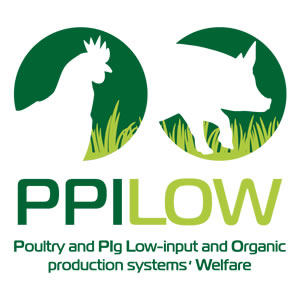WP6: Cognitive abilities and behavior of free-range broiler chickens
WP6: Cognitive abilities and behavior of free-range broiler chickens – by Vitor H. B. Ferreira, Arthur Simoni, Hélène Leruste (YNCREA HDF), Karine Germain (INRAE, UE EASM), Elisabeth Duval, Sandrine Grasteau, Elodie Guettier, Ludovic Calandreau (INRAE Val de Loire), Vanessa Guesdon (YNCREA HDF)
In free-range systems, some animals explore the outdoor range more than others. Scientific studies have already shown that range use depends on numerous factors such as season, weather, time of the day, presence of plant cover, or even internal factors such as age, sex, and breed. When all these factors are controlled, and the conditions are kept similar, there is still a great variation in range use between individuals of the same flock. Some chickens are more constant in their range use and exploration than other chickens, who prefer to stay in or close to the barn. For sanitary, welfare, and commercial purposes, it is important that animals use the available range more frequently and homogeneously.
The first experiments of the PPILOW WP6.1 focused on the search for early and stable behavioral signs of range use. Before and after range access, chickens from two flocks (spring and fall), reared under the same conditions, were followed continuously from a young age until slaughter age, through behavioral observation and individual testing on multiple situations. The results of these experiments (currently under analysis) are expected to identify whether and how more and less exploratory individuals differ in their behavioral patterns, and how stable and reliable these differences are in order to predict future range use. The outcomes of these works can be potentially useful to the selection of more exploratory individuals based on fewer and reliable behavioral criteria before their range access.
Our previous studies on free-range chickens have shown that range use is linked to individual cognition, or, in other words: how chickens perceive, process, and memorize information from their environment. Less exploratory chickens performed better during a spatial memory task and exhibited increased inhibitory control compared to more exploratory ones. These studies, however, started after range access and ended few days before slaughter. For the next experiment of the PPILOW WP6.1, we aim to implement less time-consuming cognitive tests on chicks (before range access) and focus attention on selected behaviors of the first experiments. These studies are needed to understand and better interpret the differences in cognitive and behavioral patterns and to discover by which mechanisms they influence the exploratory behavior of animals. The investigation of the cognitive abilities of farm animals advances our knowledge of their biology. In the case of free-ranging chicken production, this knowledge is essential to design farms better suited to allow animals to express their natural behavior, and thus more respectful of their welfare.

© Vitor Ferreira (INRAE, ISA Lille – Yncréa Hauts-de-France)

